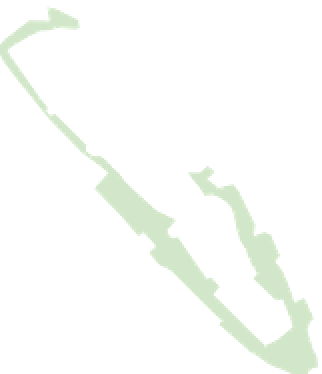Travel Reference
In-Depth Information
Left
Budapest History Museum
Centre
Lords' Street
Right
Batthyány Square
The Castle District and North Buda
A
UNESCO WORLD HERITAGE SITE
, the medieval town of Buda grew up
around a castle built by King Béla IV in the 13th century. The castle was
erected on a hill that rises 170 m (558 ft) above the Danube, to protect it from
invading hordes. However, it wasn't enough to repel the Turks, who ravaged
and then neglected Buda in the 16th century. It was the Habsburgs who inally
restored and embellished the town in the 1800s, in the glorious, Imperial style
we see today. North of the castle is Víziváros (Water Town), an area irst inhabit-
ed by people too poor to live on Castle Hill. Forever ighting back lood waters -
the phenomenon which gives Víziváros its name -
modern-day Buda, which extends as far north as the
old Roman garrisons at Óbuda and Aquincum, grew
out of these unlikely beginnings. Today, Víziváros is
one of the most exclusive resid
e
ntial districts in
Budapest, and home to its inest restaurants.
))
%(0-
75
%(0-
8
Mátyás Church tower
1$*<
,05(75
6=1$
75
Sights
1
Royal Palace
2
Hungarian National
Gallery
3
Budapest History
Museum
4
Sándor Palace
5
Mátyás Church
6
Lords' Street
7
Vienna Gate Square
8
Church of St Mary
Magdalene
9
Fishermen's Bastion
0
Batthyány Square
.PT[LWBUÏS
#BUUIZÈOZUÏS
6¬ZIV ROS
95)
2.8
6=,/*<,
75
6 R
7ÏSNF[ķ
6]ªFKHQ\L
O¢QFK®G
&KDLQ%ULGJH
'6=
75
&/$5.'0
75
%ÏMJ
1ÈMZBVEWBS
.5,6=7,1$
75
8))
'=6$
75
ZBSET
NFUSFT
62
Previous pages:
Mu
seum
of Applied Arts












































































































































































































































































































































































































































































